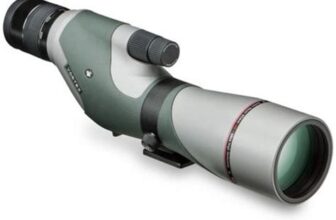
Hiking is an exhilarating outdoor activity that allows individuals to explore nature, challenge their physical abilities, and experience breathtaking landscapes. However, to truly enjoy the journey, one must invest in suitable footwear. Hiking footwear plays a critical role in ensuring comfort, stability, and protection, all of which are essential for a successful and enjoyable hiking experience. In this article, we will delve into the various factors to consider when choosing hiking footwear to help you find the perfect fit for your adventures.
Understanding the Types of Hiking Footwear
Before diving into the selection process, it’s essential to understand the different types of hiking footwear available:
a) Hiking Shoes: Hiking shoes are lightweight and flexible, offering a good blend of comfort and support for short hikes on well-maintained trails. They are ideal for day hikes or lighter loads.
b) Hiking Boots: Hiking boots are sturdier and provide more ankle support, making them suitable for longer hikes, challenging terrains, and heavier loads.
c) Trail Running Shoes: For those who prefer a more nimble and agile option, trail running shoes offer comfort and flexibility, but they may lack the durability and support of hiking boots for tougher trails.
Consider the Terrain and Duration
The type of hiking footwear you choose should match the terrain you plan to explore and the duration of your hike. If you’re trekking through rough and rocky terrain or carrying a heavy backpack, opt for hiking boots to provide extra stability and protection. For easy to moderate trails, hiking shoes or trail running shoes might be sufficient to keep you comfortable throughout your journey.
Fit and Sizing
A proper fit is paramount when selecting hiking footwear. Ill-fitting shoes can lead to blisters, foot fatigue, and discomfort, ruining the overall hiking experience. Here are some tips for ensuring the right fit:
a) Try on shoes in the afternoon: Feet tend to swell during the day, so trying on shoes in the afternoon ensures you find a size that accommodates your feet at their largest.
b) Wiggle room for toes: Make sure there’s enough room in the toe box to wiggle your toes comfortably. This prevents cramped toes during long hikes.
c) Heel and ankle support: The heel should fit snugly, and the shoe should provide adequate ankle support to prevent injuries on uneven terrain.
d) Walk around: Take a stroll in the store to assess the shoe’s comfort and fit. Pay attention to any pressure points or discomfort.
Material and Breathability
Hiking footwear is typically made of leather, synthetic materials, or a combination of both. Each material has its advantages. Leather is durable and provides excellent support, but it requires more break-in time. Synthetic materials often offer better breathability and are lighter but may not be as durable as leather. Consider the climate and weather conditions you’ll be hiking in, and choose footwear with appropriate breathability to keep your feet dry and comfortable.
Waterproofing and Weather Resistance
If you anticipate hiking in wet or muddy conditions, consider waterproof or water-resistant footwear. Keep in mind that while waterproof shoes can keep your feet dry, they may compromise breathability. For humid or warm environments, opt for shoes with moisture-wicking features to prevent excessive sweat buildup.
Traction and Outsole
A robust outsole with deep lugs and aggressive traction patterns provides better grip on slippery or loose terrains. Look for hiking footwear with a sturdy rubber outsole that can handle the demands of various surfaces, such as rocks, mud, and gravel.
Weight
Hiking footwear weight can significantly impact your hiking performance, especially on long treks. Lighter shoes are more agile and suitable for less demanding trails, while heavier boots offer superior protection and stability on rugged terrain. Strike a balance between comfort and protection by choosing footwear that suits your hiking style and preferences.
Test the Footwear Before the Hike
Before embarking on a lengthy hiking trip, take your new footwear for a test hike on shorter and less challenging trails. This will help you break in the shoes and get a sense of their comfort and fit. It’s essential to ensure your feet adapt to the footwear to minimize the risk of blisters and discomfort during more extended hikes.
Choosing the right footwear for hiking is a crucial step in preparing for an unforgettable outdoor adventure. With the right fit, support, and traction, your feet will be ready to tackle any terrain and enjoy the beauty of nature comfortably. Take the time to research, try on various options, and consider the specific demands of your hiking journeys. By following the guidelines outlined in this article, you can confidently select the perfect hiking footwear to accompany you on countless memorable hiking expeditions. Happy hiking!






